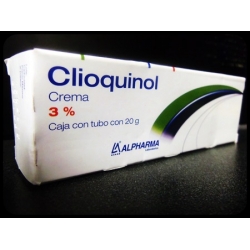SMON, the viral epidemic that never was

The following is a summary from the book Inventing The Aids Virus by Peter Duesberg. Although published in 1996, the book is still relevant today. I am sharing this in the hope it will encourage people to question declarations handed down to them from scientists and media. It is also important to understand that scientists are people just like everyone else. They have their biases and may pursue research with the tunnel vision of their narrow range of expertise.
A new epidemic emerges
In 1959 patients in Japan began presenting with what appeared to be a new viral infection. Symptoms included nerve degeneration, paralysis of limbs, along with intestinal problems which manifested as internal bleeding and diarrhea. Outbreaks happened locally in clusters, including even families. Clusters centered around hospitals, peaked in the summer and there were higher rates of SMON among medical workers.
Considering the similarity of symptoms to polio, researchers hunted for the viral cause of SMON. This continued for years. It was a mysterious virus as patients did not have typical signs of infection such as fever or rashes. Blood tests showed no infection. Meanwhile, SMON carried on, even causing blindness in some.
In 1964 the disease was given the name "Subacture Myelo-optico-neuropathy" or SMON. The Japanese government funded a commission to investigate SMON. This included several virologists. Soon after there was a major breakthrough. An echo virus was found in excretions from SMON patients. Echo viruses had already been discovered in polio research. They where known to infect the intestines, but where not thought to cause disease. Now an echo virus was being found in the digestive system of SMON patients.
In 1965 research was published that the virus had been linked to SMON thus demonstrating the disease's cause. This was followed by more years of research by other scientists trying to confirm the findings. They were not able to do this. The commission ended its research in in 1967, failing to find a cause. Then in 1968 researchers found a Coxsackie virus in patients. This turned out to be a laboratory contamination.
More money and research for the virus hunters
In 1969 the Japanese government funded a new commission. This one with 10 times more funding than the first one. This commision headed by virologist Reisaku Kono would also be largely a hunt for the viral cause of SMON. For three years research was done into finding a "slow virus". This was based off of the work of virologist Careleton Gajdusek who claimed to have found such a virus as the cause of kuru. The "slow virus" cause of kuru was not based upon isolating a virus. Instead he injected unpurified mixtures from diseased brains into monkeys, and then showed replication of neurological symptoms. So now, similar research was being done in Japan to find the viral cause of SMON.
In 1970 researcher Shigeyuki Inoue claimed to have found a the viral cause of SMON. Although his results had not been replicated the media published his results. This lead to hysteria. Patient families would refuse to see them from fear of contracting the disease. There were even suicides among patients based on this work.
Clinoquinol
Thankfully, not all SMON researchers where virus hunters. In July 1970 it was found that almost all SMON patients in a hospital had used the drug clioquinol. Drug toxicity also matched many feartures of SMON. The drug was prescribed more in the summer, it was not prescribed to children in high doses (SMON did not appear in children) and the lack of typical viral infection symptoms. The clusters of cases, which was assumed to be caused by a contagious disease, simply reflected the pattern of clinoquinol use. In September 1970 the Japanese government banned the sale of clinoquinol. The disease epidemic was soon over. Nonetheless, it would take a few more years for the viral hypothesis to be abandoned by all the virus hunters.
Later on the pharmaceutical company which many clinoquinol was successively sued. They had ignored reports from all over the world of symptoms appearing wherever clinoquinol was used.
So why did it take so long for the non-viral cause of SMON to be found? Two reasons. Clinoquinol was commonly used in Japan to treat the gastrointestinal symptoms of SMON. Doctors did not wish to believe that their treatment was actually the cause of the disease. The second reason was the Japanese government funding primarily virologists. They would then go on the hunt for the viral cause of disease. This all happened after polio, and so researchers were looking for a similar cause. Preliminary data that clinoquinol was the cause of SMON was found early in the investigation. It took years for this to be pursued.